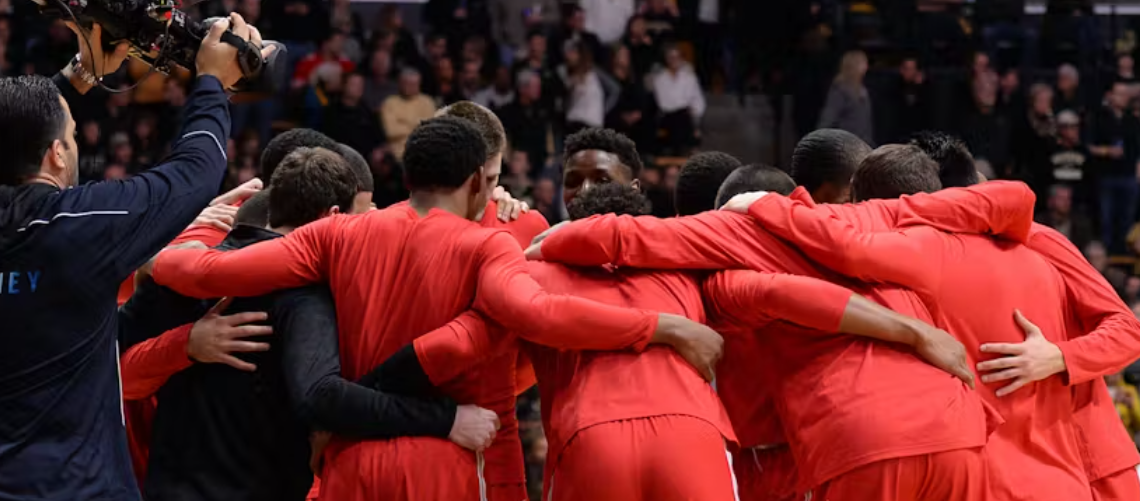Jared Bahir Browsh, Assistant Teaching Professor of Critical Sports Studies, University of Colorado Boulder
The Pac-12 is likely to be competing in its last March Madness, as realignment has pushed 10 of its schools to other conferences. What led the most decorated conference in the NCAA to dissolve so quickly?
This surprising development arguably dates back to a decades-old court decision. As the NCAA prepared for its tournament regional basketball semifinals in March 1984, the Supreme Court heard opening arguments in a case, NCAA v. Board of Regents of the University of Oklahoma, that would change how Americans watch college sports.
After the court’s ruling, there were no limits on how much college football could be broadcast on TV, which previously was restricted to a maximum of six nationally broadcast games every two years. The regionally focused conferences of the NCAA would become a national business, driven by television money from football. As a professor of critical sports studies, I see the court ruling’s influence today with the downfall of the Pac-12.
A history of televised college sports
Even during TV’s experimental era of the 1930s, college sports were an attraction. The first televised college football game was broadcast in 1939. By 1950, a few schools, including the University of Pennsylvania and Notre Dame, had signed deals to air their football games regionally.
But that changed in 1951, when the NCAA took control of football television rights – and, in an effort to protect attendance at games, attempted to eliminate live TV broadcasts. Some universities, unsurprisingly, weren’t thrilled with the news. Penn told the association it would continue airing games, but gave up when it was threatened with sanctions.
The NCAA eventually relented later that year, allowing sold-out games to be shown on TV. That led to the first coast-to-coast broadcast of a live sporting event, when Duke visited the University of Pittsburgh for a football game in September 1951.
By 1952, the NCAA allowed one national game to be broadcast each week, and in 1953, it allowed NBC to provide “panorama” coverage of regional games. In 1955, the NCAA acquiesced to pressure from conferences, including the Big Ten, and increased the availability of regional games, offering one national game for eight weeks and regional games the other five weeks of the season.
Throughout this time, the bowl games – such as the Rose Bowl, which started in 1902 as part of a holiday festival – remained independent of the NCAA’s policy. The exposure from these games proved to university administrators that televised college sports could be lucrative and boost applications.

Tired of the restrictions on media exposure and revenue during the regular season, several universities got together in 1977 to form the College Football Association and challenge the NCAA’s control of television rights. Two years later, the CFA began negotiating a television contract with NBC – while the NCAA was in the midst of negotiations with CBS and ABC.
The organizations were on a collision course. By 1981, the CFA agreed to a contract with NBC, and the NCAA declared that any CFA members who participated in the contract would be sanctioned in all sponsored sports. Two CFA member schools, the University of Oklahoma and the University of Georgia, immediately filed suit to gain control of their television rights.
From the gridiron to the Supreme Court
After both district and circuit courts ruled that the broadcast restrictions qualified as unfair restraint on the free market, the NCAA appealed to the Supreme Court. Oral arguments took place on March 20, 1984. By June, the court had ruled against the NCAA, allowing the CFA to oversee media contracts for its members.
By 1996, the major conferences broke from the CFA, which ceased operations in 1997, and began negotiating on their own in an environment that now included a number of national and regional networks interested in broadcasting college football.
In 1987, NCAA member schools also voted to allow conferences with two divisions of at least six teams to hold a conference championship that wouldn’t count against their game limit. This motivated conferences to gain control of their television rights and leverage a championship game for more money.
A flood of money
As conferences took control of their media rights, TV networks continued to pour money into college football and were soon joined by streaming services. The Big Ten alone commands over US$1 billion in media rights, up from $10 million in 1996.
In addition to the conference media rights, the bowl games and College Football Playoff negotiated separate contracts – the latter of which was signed with ESPN in February 2024 for $1.3 billion a year over six years.
This flood of money comes at a time when 67% of Americans question the relationship between the NCAA, conferences, colleges and student-athletes. The NCAA has allowed athletes to profit from their name, imagine and likeness since 2021, after several states legalized the practice. The same year, NCAA initiated new rules giving athletes more freedom to transfer.
In spite of these changes, the NCAA faces several lawsuits that challenge the nonemployee status of student-athletes. Formerly regional conferences have become national businesses, and it’s becoming harder to argue that college athletes are amateurs as their talent brings in more and more revenue for schools.
The Conference of Champions connection
So, what does this have to do with the Pac-12 as it faces extinction? Everything. In 2022, the Big Ten negotiated a historic deal that would pay schools, including Pac-12 defectors University of Southern California and University of California Los Angeles, between $80 million and $100 million a year from media rights.
Even without the Los Angeles market, Pac-12 administrators tried to cash in, countering ESPN’s $30 million-a-school offer with one valued at $50 million a year.
But ESPN quickly walked, and when the only deal on the table was a short-term one with Apple TV for just $25 million per school, eight more universities left for other conferences offering more lucrative deals. This is why the conference with the most NCAA championships may not have another opportunity to add to its trophy case in 2025.
Although many people saw changes on the horizon, few could have imagined this much “madness” when the court ruled in favor of the University of Oklahoma back in 1984 The nearly 75-year television tug of war isn’t over, and the money it generates will continue to transform college sports. Money has seemingly toppled tradition, as the Pac-12 schools walk away from 108 years of history.


















